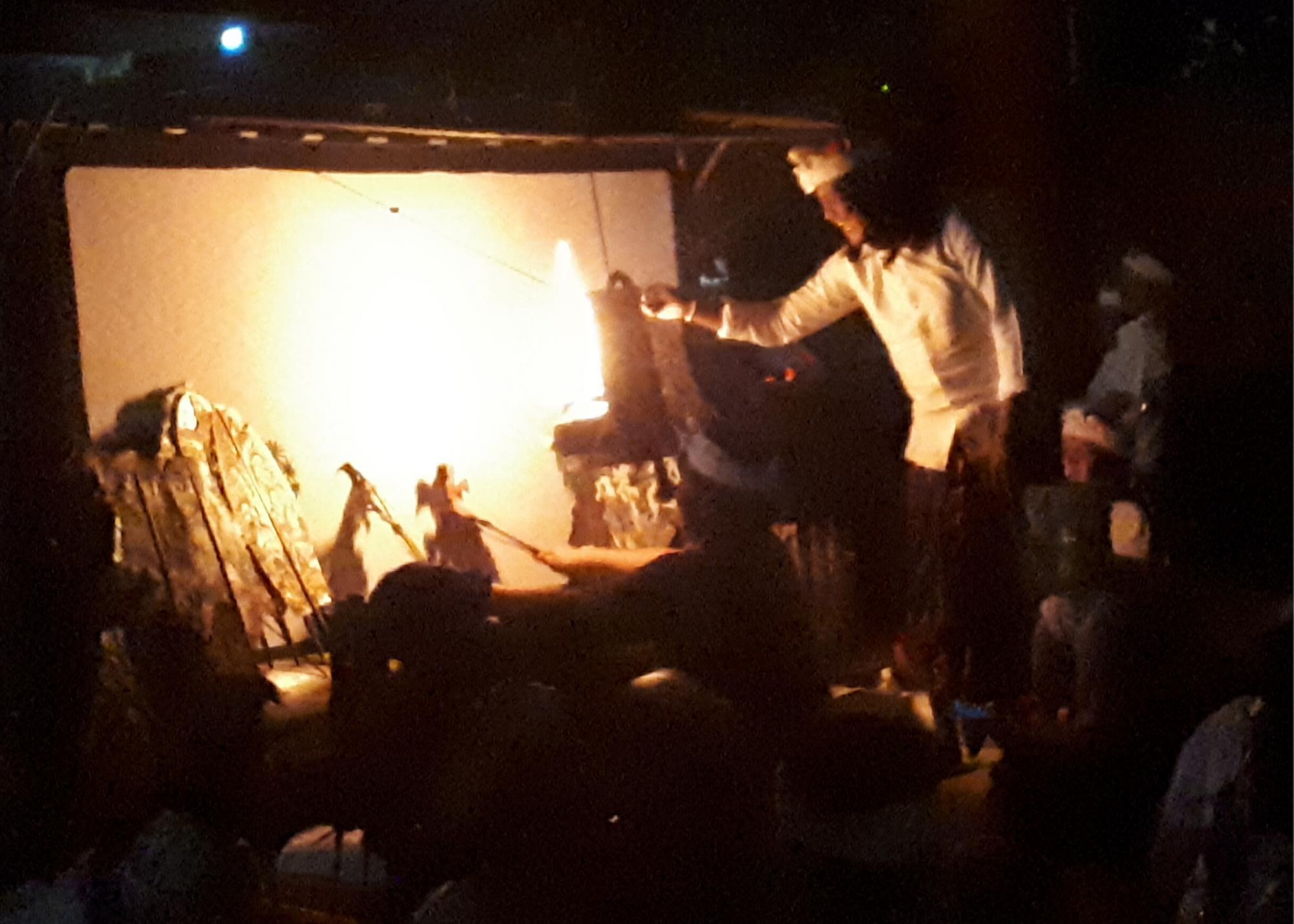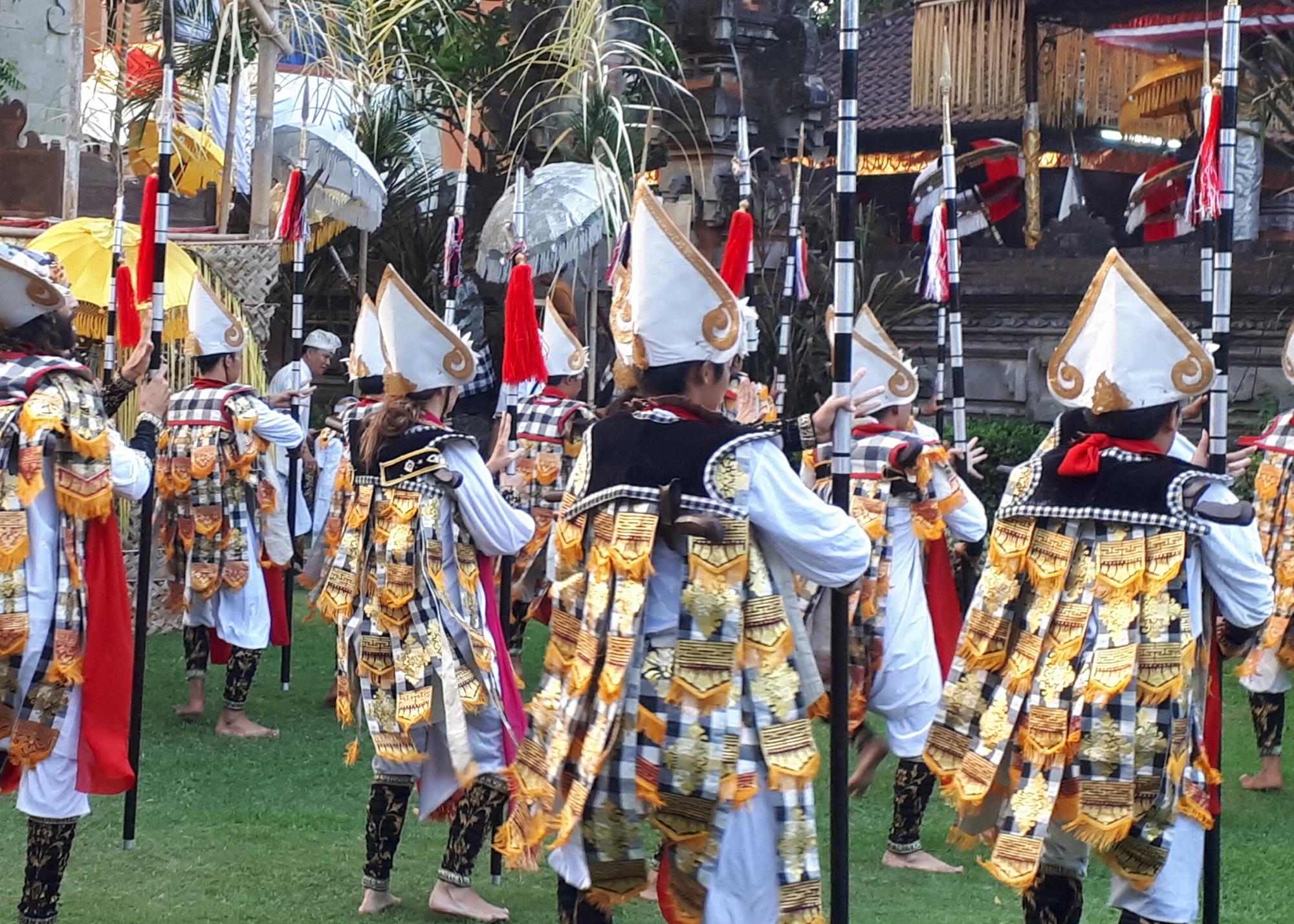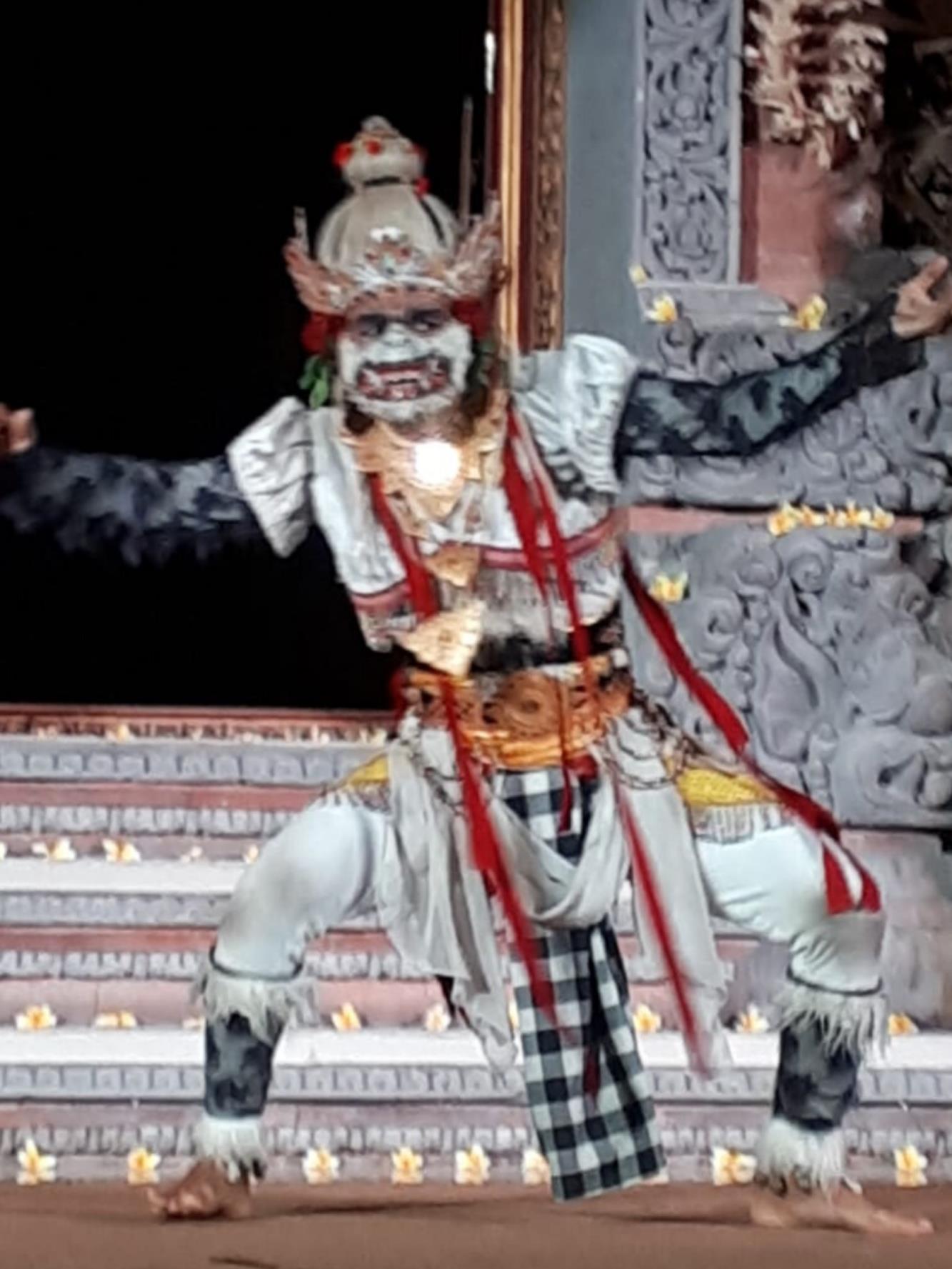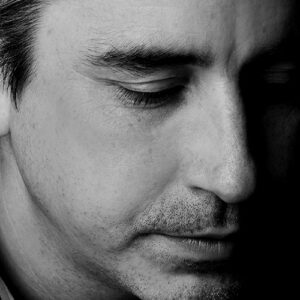
In 2014, I had the pleasure of participating in a cultural performing arts exchange in Bali, Indonesia, as part of the East15 Acting School Directing MFA program. As a working director for many years prior to my MFA, to say that my time in Bali influenced my practice would be an understatement. This fall, I was able to return to Bali to develop future collaborative pathways. My host for this trip was noted Wayang (shadow puppetry) puppeteer Professor I Nyoman Sedana. I would also work with his students in a workshop exercise researching cross cultural exchange. It is here that I would discover the link between creation and community.
Due to a historical tragedy and a tremendous act of bravery by Balinese leadership in colonial times, the Balinese society was protected from the cultural repression commonly associated with European colonization. As a result, the performing arts practices such as Wayang Kulit reach back thousands of years.
The village of Ubud is known as the arts capital of Bali. Over 3 days, my intention was to meet as many artists and catch as many performances as I could. I also needed an escape from Denpasar motorcycle traffic.
Professor Sedana, had kindly connected me with his friend, Anak Agung Gede Anom Putra, the artistic director of Gamelan Semara Ratih. A collective of leading musicians, composers, dancers, and choreographers, the group performs extensively throughout Bali and Java. The troupe has performed in North America, Europe and Asian. Semara Ratih was the first non-Western group to perform at the Royal Danish Theatre (Copenhagen) and the first Gamelan troupe to perform in Turkey. The company is dedicated to ensuring the continuation of Balinese art forms.
Anom welcomed me in the Balinese way – with a smile. We kicked off our shoes and sat down on mats on the main porch of his compound. Our conversation wouldn’t last long however.
Kecak (Ramayana monkey chant) is a form of rhythmical chant and dance drama. The performance usually depicts a battle from the Ramayana where the monkey-like Vanaras and Hanuman the Monkey King aid Prince Rama in his fight with the evil King Ravana. It is performed in a circle of sometimes up to 200 performers with Fire Trance rituals accompanying certain sections. Kecak was developed in the 1930’s from Balinese temple practices in a collaboration between German painter and choreographer Walter Spies and Balinese dancer Wayan Limbak.

I had seen a kecak earlier that week at Festival Seni Bali Jani at The Denpasar Performing Arts Centre. It had been an exhilirating performance as two Hanumans battled for the stage. Among the chants and movement, the performers broke into two armies, dragged an audience member on stage, and used an extensive use of fire.
Unlike that Kecak, this one was for a tourist audience. The same art, skill and passion but with different purpose. Set in a Balinese temple, this was more formal in nature, intended to share and showcase stories and culture.
The following night, I would see Anom’s troupe’s The Spirit of Bali. Done for a more intimate audience on the smaller temple stage, there would be no Bintang beer sellers or fire trance. The evening featured new compositions for the Gamelon Gong Semaradhana and Pendet, Barris Tunggal, Legong Jobog, Teruna Jaya dances. The evening ended with Anom’s dance creation Hanuman The Monkey King. Waves of hammers fell over the Gamelans in perfect unison, flowers were tossed at the audience, Hanuman invaded the orchestra. A wonderful night of magical art by skilled and dedicated musicians and dancers.

On my final night I was invited to watch the company learn a new composition. I would arrive to find the Gamelan orchestra in full swing.
Balinese Gamelan Orchestra is a traditional multi-timbre ensemble consisting of metallophones, xylophones, flutes, gongs, voices, as well as bowed and plucked strings. The earliest image of a musical ensemble is found on the bas-relief of 8th century Buddhist monument of Borobudur, Central Java and the instruments were developed into their current form during the Majapahit Empire (1293 – 1527). Gamelan accompanies dance, wayang, rituals and ceremonies.
They learn through call and repeat, singing or playing back and forth to each other, laughing at errors, sometimes smoking cigarettes, sometimes answering phones discreetly. The composer sat in the middle of the group with his own instrument, smiling as something he had only imagined came to fruition, sitting across from an artist and playing the notes with his hammer as the musician followed, sometimes singing out a few bars. When they would reach a new section, he only had to play out the section or sing out the next few notes and layers of complexity from all sections of the orchestra would respond.
Nich Davies, a fellow Canuck studying with the orchestra, described the process as “a bit like a virtuoso garage band.” The artists meet when they can and rehearsal is as much a social event as work. A few moments later he was invited to join in on the sekaha, the open space for practice and the storage of the instruments.

The evening ended with the dinner as the ensemble sat down in front of their instruments and dug into their rice and pork, before one by one hopping on their motorcycles and heading into the night.
I asked Anom about the process.
“We believe it is about community, coming together.”
The work isn’t just for a community, expressing or representing a community, but the very heart of the process is making community by making art together.
2 days later I was on the back of another motorcycle, this time to see a temple event Wayang performance (shadow puppetry). Professor Sedana’s son, Georgian who at 21 was already a very talented wayang artist himself, was assisting an emerging dalang.
A dalang (master shadow puppeteer) is supported by a team of musicians and assistants. The assistants keep the fire lit and assist the dalang with their needs, passing specific puppets, etc. There is no pre-set stage at temples, despite the importance of wayang in Balinese spirituality. The team bring their small Gamelan orchestra and gear and set up their screen with a few bamboo poles.
Balinese performances take place in a kalang. This can be a clearing or courtyard at someone’s house, a field or square in a village, the outer courtyard of a temple, or a permanent structure of an elevated stage in a thrust format at a community centre or arts venue. There are rarely tickets, reserved seating or a timetable. Performances begin when the artists have gathered, been fed and blessed. In the case of temple ceremonies, once spiritual activities have been completed. Performance may begin at 9 PM or later and can go on until early morning.

I joined an audience group watching from behind the screen. The young dalang sat motionless in prayer as his team bustled around him, cracking jokes and checking their Instagram.
Later I asked him how he was able to connect with the audience through the kelir, the white cotton screen stretch on the bamboo frame.
“Maybe one day, when I’m better, I’ll feel them. Now I do the performance for Nature.”
Balinese performers believe in the principle of Tri Loka – the three worlds. These are defined in Taksu: In and Beyond the Arts by Professor I Wayan Dibia as:
• Shwah Loka (Gods, Deities, and other Divine Spirits)
• Bhwah Loka (Human Beings, Animals, Plants, etc.)
• Bhur Loka (Demons and lesser spirits)
Putu I Agus Meliartawan, a comedically gifted 4th year wayang student explained it as we sat together at 2AM after an ISI Denpasar Ceremony event to honor Puppetry.
The activities that day included Barris dance, Legong and Wayang which all faced the ISI Temple compound with audiences watching from behind or the side. Additional space was set aside for any other non corporeal audience participants. International students were invited to participate in the activities.
Puta’s wayang performance that night had been so outrageous that his orchestra, those watching from behind the screen and the teaching staff standing around frequently broke into laughter almost grinding the performance to a halt. I swear I thought one of the shadow puppets was going to crack. “The powers that be” appreciate a good joke as much as the human beings who make them and the bonding resulting from the doing of the activity between the artists and between those around them was palpable.
The acts of creation and performance serve to help find balance in these relationships. Human beings connecting with higher powers, human beings connecting with each other, and human beings connecting with the natural world around them.
Art does not need an audience, or at least a corporeal one. The act of creating art with others itself serves deeper and more meaningful purposes.
In Search of Taksu: Cross Cultural Explorations in Bali and Art & Power of Change
Rural Arts Festivals: Interview with Paint the Town (UK)


Jack (he, him) is an award-winning devisor, director, translator, and creative producer whose work and practice have taken him across Canada, Europe, the United Kingdom, and around the world. Projects have ranged from contemporary devising, multi-disciplinary, cross-cultural, and multi-lingual experiences to new works & texts, contemporary approaches to classical theatre and main stages. Shows under his direction have garnered over thirty theatre award nominations with many wins. He trained at leading international theatrical institutions including Circle in the Square (NYC, USA), GITIS The University of Performing Arts (Moscow, RU), ISI Indonesian Institute of the Arts (Bali, INA) and received his Masters in Fine Arts from the renown East 15 Acting School and University of Essex (London, UK).
Read Full Profile© 2021 TheatreArtLife. All rights reserved.

Thank you so much for reading, but you have now reached your free article limit for this month.
Our contributors are currently writing more articles for you to enjoy.
To keep reading, all you have to do is become a subscriber and then you can read unlimited articles anytime.
Your investment will help us continue to ignite connections across the globe in live entertainment and build this community for industry professionals.